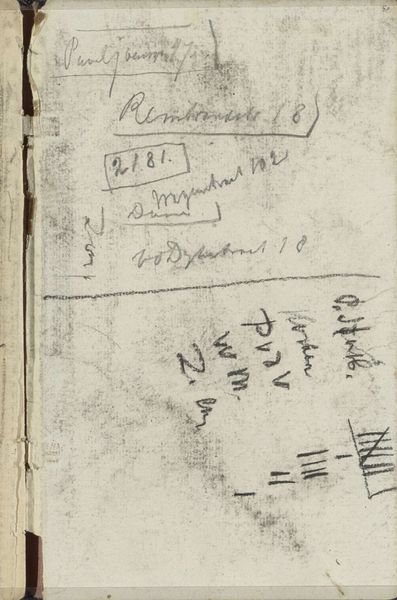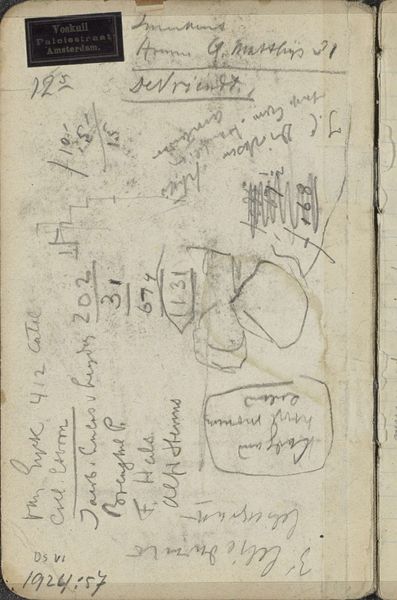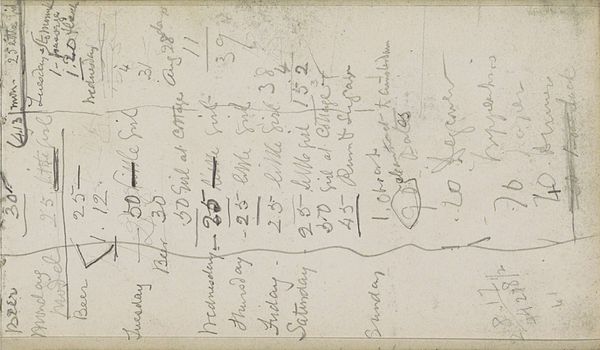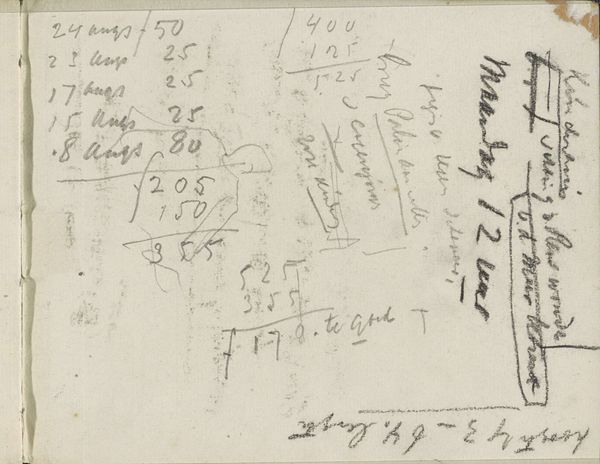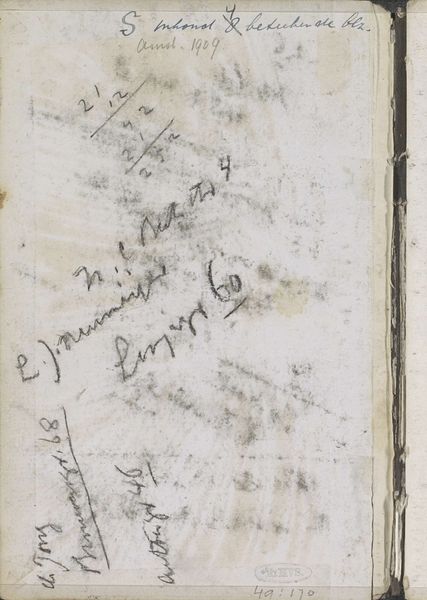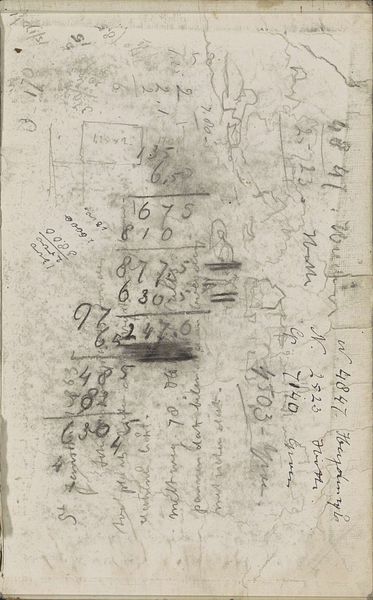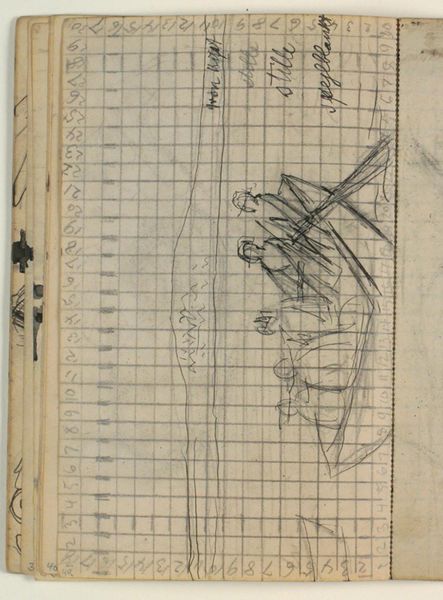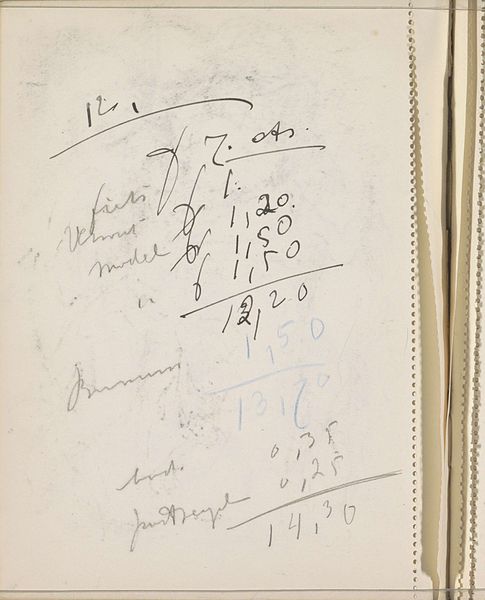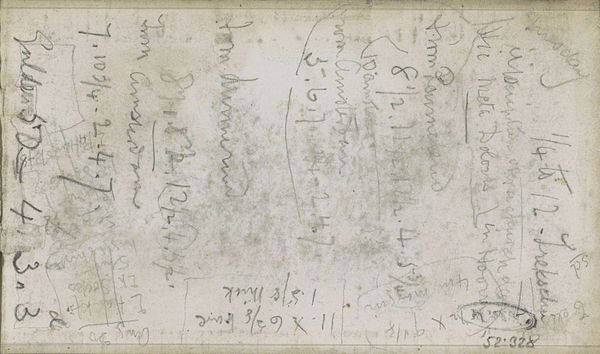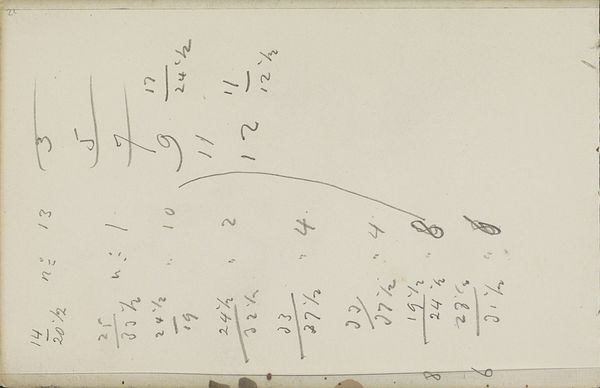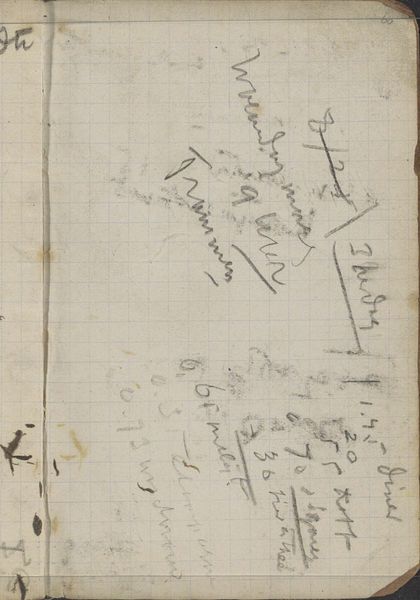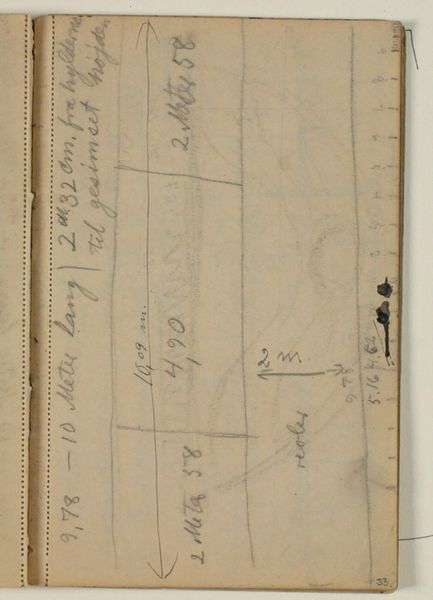
drawing, paper, pencil, graphite
#
drawing
#
paper
#
form
#
pencil
#
abstraction
#
graphite
#
academic-art
Copyright: Rijks Museum: Open Domain
Curator: Here we have George Hendrik Breitner's "Studies," a graphite and pencil drawing on paper, created between 1883 and 1885, and held at the Rijksmuseum. Editor: It feels incredibly raw and unfiltered, doesn’t it? Like peering directly into the artist’s working mind. I'm seeing a lot of layered math and textual sketches, like equations and maybe addresses? It really disrupts traditional notions of artistic presentation. Curator: Absolutely. The material reality speaks volumes. We have the direct, unmediated mark-making of graphite on paper. Breitner's artistic labor becomes palpable; we see the workings-out, the experimentation that usually remains hidden. He's subverting the expected polish of academic art by showing us the messy, iterative nature of creation. Editor: This resonates powerfully when considering the context. Late 19th-century Amsterdam was undergoing immense social and industrial change. I see this drawing as reflective of that turbulence—the city’s relentless energy captured in these restless lines. This aesthetic shift is reflective of art diverging away from old conventions towards art styles like Impressionism. Curator: Precisely. Think about the availability and cost of drawing materials at that time and the rising significance of paper. These elements affected Breitner’s process directly, and this drawing offers critical insight into studio practices of the period. Was it purely sketches before painting something else? Is this meant to be a stand-alone drawing? These "studies" could very well be a piece for his studio wall. Editor: I am so in agreement that this tells such a story about Breitner's world! Amsterdam was changing rapidly with expanding capitalism and class division. Could the numbers refer to income disparities or demographics—all translated through his subjective, artistic experience? Breitner's sketch could be his internal navigation system. I appreciate that these studies of mathematics, notations, addresses are just as significant as representational images. Curator: That resonates. By engaging directly with the drawing’s physicality and production, we uncover how it challenged conventional hierarchies that historically prized finished paintings above sketches. The evidence is right in front of us. Editor: It all pushes us to question what is worthy of preservation and, by extension, which stories matter and from whose perspective they are being told. This really redefines what constitutes the “artist’s work.” Curator: Yes, there’s beauty and significance to be found in the immediacy of Breitner's process. Editor: It encourages us to deconstruct power dynamics to discover the broader societal conditions in artistic practice. It challenges our assumptions about intention and representation itself!
Comments
No comments
Be the first to comment and join the conversation on the ultimate creative platform.
